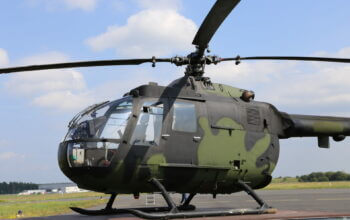Joby Aviation’s first full-scale eVTOL prototype experienced a “component failure” that resulted in “substantial damage” when it crashed last month, according to a preliminary report from the National Transportation Safety Board (NTSB) investigating the cause of the Feb. 16 accident.

NTSB released the report on Tuesday, confirming what Joby’s original 8-K filing to the U.S. Securities and Exchange Commission (SEC) reported. Investigators said there were no injuries during the accident, which happened over an uninhabited area near Jolon, California, at around 10 a.m. PST on Feb. 16.
The aircraft, with a registration number N542AJ, is believed to be Joby’s first pre-production prototype, which was remotely piloted during the flight test. The preliminary report included very few details about the accident, but noted that a fire broke out on the ground and there was no explosion as a result of the crash.
In the weeks leading up to the accident, Joby had been expanding its flight envelope, announcing that it had reached a speed of 205 miles per hour (330 kilometers per hour) in January, and an altitude of 11,000 feet (3,353 meters) in February. During the day of the crash, ADS-B Exchange data recorded groundspeeds of up to 276 mph (444 km/h) at times.
The California startup stated in its SEC filing that, “Experimental flight test programs are intentionally designed to determine the limits of aircraft performance, and accidents are unfortunately a possibility.”
Joby is now down to one aircraft — an identical prototype earmarked for flight testing with the U.S. Air Force’s Agility Prime program.
As the investigation continues, Joby said it is not permitted to comment on the accident or how it might impact its path to certification. It’s also unlikely anyone will know that answer until the full investigation is complete, which could take 12 to 18 months.
In the meantime, NTSB could shed more light on the crash when it issues its factual report, which an NTSB spokesperson told eVTOL.com could take six to eight months, or even up to a year depending on whether investigators need to conduct lab work.
“For any accident, we need to know if it was due to a potential design issue, an operational issue or something else,” Walter Desrosier, vice president of engineering and maintenance at the General Aviation Manufacturers Association (GAMA), previously told eVTOL.com when asked to comment on Joby’s accident. “Does it come back to changing the design? If so, will certification requirements need to be revisited? These outcomes will determine how long the certification process is potentially lengthened in a scenario like this.”
Joby previously said it expects to obtain type certification from the U.S. Federal Aviation Administration next year, and begin commercial operations in 2024. The eVTOL developer recently announced that it has been working with the U.S. Civil Aviation Authority to establish a path to have its U.S. type certificate validated in the U.K., as both aviation authorities continue to collaborate to certify new eVTOL aircraft.









Would be interesting to take a deeper dive into the component failure thread. Logic would say it had to be
Rotor
Flight link
Propulsion system behind the rotor
What was it?
Real aviation companies would have determined this way before this early in the flight timeline through various approaches
“Real” aviation companies? *laughs in 737 max
This real aviation company did what it should do, test the oldest unit at its highest capacity with no danger to life and limb and push it until it breaks. They will sort it out and be better for it and first to market
Nothing to worry, successes will come after failure. keep it up.